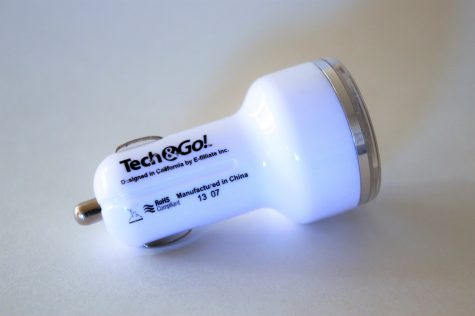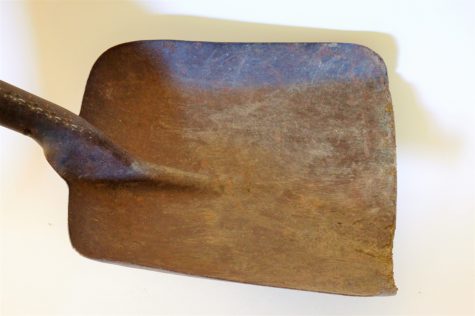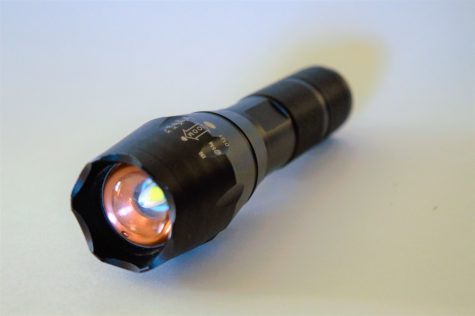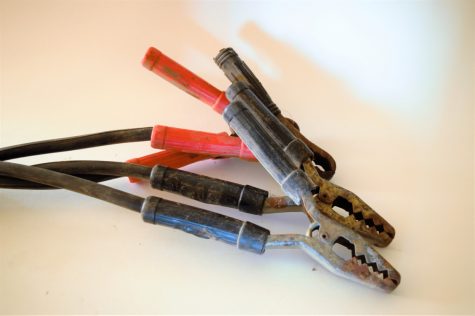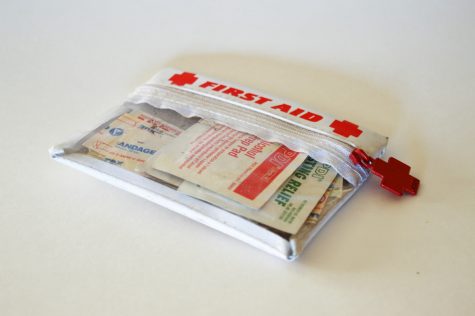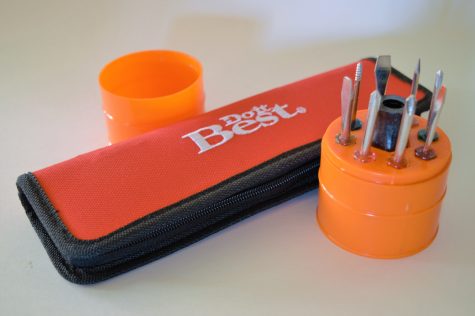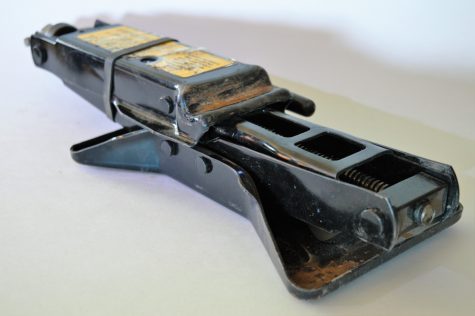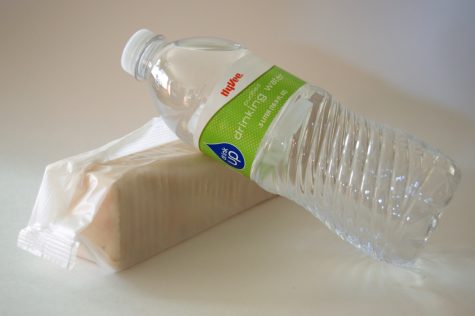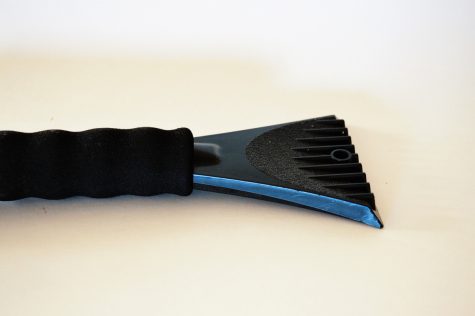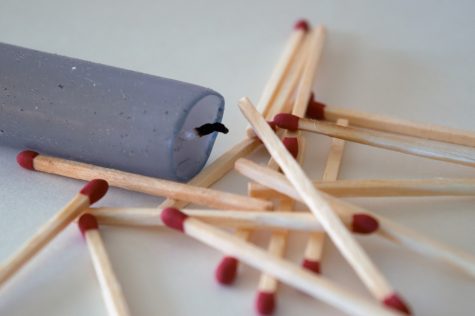Winter Survival Kit
How to make one and what to do in case of emergencies
Minnesota winters can be some of the coldest in the nation, and the upcoming one is not going to be an exception. In such conditions, accidents are an inevitable consequence on the slippery roads. Everyone has heard winter driving horror stories and maybe even experienced a few of their own. Such stories make one question, “Would I be prepared?” There are a lot of ways to prepare for being stranded in a car during the winter, one of which is creating a winter survival kit to keep in a vehicle at all times. Below is a list of winter survival kit essentials to make the experience of being stranded in a car during the winter months a little more bearable.
Cell Phone Charger
When stranded in one’s car during the winter, it is essential to call for help, whether that be a parent, friend or tow truck. It is necessary to be prepared for dead cell phone batteries, especially throughout winter’s battery draining low temperatures. Depending on the circumstances, it may even be necessary to call 911.
Blankets
Minnesota winters get very cold, with temperatures often falling below 0℉. Blankets will help car occupants stay warm, especially if they are not dressed for the winter weather.
Shovel
Sometimes a tow truck is not necessary to get out of a snowy ditch. In such circumstances, a shovel is essential for digging one’s car out of the snow. If possible, a foldable shovel which fits in small areas is even more convenient for car storage.

Extra Winter Gear
When going for a drive during winter, car drivers and occupants should ideally dress to spend at least one hour outside. This is not always possible, so it is necessary that one is prepared with extra winter gear waiting in his/her car. Make sure to have extra jackets, hats, gloves, boots and socks. Hand warmers can also be helpful, but are not necessary.
Flashlight
If a car is stranded at night, and its battery is dead, there will not be any lights. It is important to be able to see for survival, especially if one needs to find things or do repairs to their vehicle, such as changing a tire. Therefore, a flashlight can make a huge difference in a survival situation.
Sand/Grit/Salt
Again, sometimes, a tow truck is not necessary. Sand, grit and salt can be the difference between spinning tires and actually driving out of a ditch. They are useful not only when in a ditch, but any time the vehicle’s tires are spinning.
Jumper Cables
Everyone should be ready for a dead battery during the winter months. If someone stops on the side of the road to help a car with a dead battery, one of the cars is going to need jumper cables. Not only should a person have jumper cables, he/she should know how to use them, because otherwise they are not very useful.
First Aid
When stuck in a vehicle, injuries can happen. It is important to be prepared with a first aid kit which includes bandages, antiseptic cream, antacids and pain relievers. In addition to basic first aid, there should be medication to treat the allergies or other conditions of common occupants of the car, such as family members.
Signal Device
It is important to let other people know that a vehicle is on the side of the road with lights or a bright colored flag. If another car is coming towards the stranded vehicle, feel free to put on the hazard lights. If not, only have the dome light of the vehicle on, because it uses less battery. Even this weaker light will still be visible far in the distance. No matter what, a bright flag or piece of cloth should be tied to the antennae of the vehicle, so that oncoming vehicles can see it in their headlights.
Tool Kit
Minor repairs may be necessary, depending on who one calls and how much he/she knows about fixing cars, but it is important to be able to do these repairs by oneself. Common tools which should be included in a tool kit are pliers, screwdrivers, wrenches, a hammer, duct tape, electrical tape, and a sharp knife.
Spare Tire/Jack
Flat tires a common reason for having to pull over or stop during any time of the year, so it is important to have the resources to deal with one. In addition to the resources, one should know how to use them, because otherwise they are slightly pointless.
Food and Water
One can be stranded for a long time, so one should have non-perishable food such as trail mix or canned goods along with water in the vehicle. Nobody should leave the vehicle, so everything needed for survival should be inside.
Windshield Scraper
Living in Minnesota, hopefully everyone already has a windshield scraper in their vehicles. If not, get one as soon as possible. If a windshield scraper is not present, a credit card can be used to clear frost without scratches.
Matches and Small Candles
Fire is important in most survival situations, and being stranded in a car is not an exception. Fire means warmth, and warmth is very important for survival when stranded during the winter months. On the other hand, cars have gasoline, which upon contact with fire, explodes, so fire is to be handled with the utmost caution near or inside any vehicle.
Additional Non-Essential Items to Consider in a Survival Kit:
- Collapsible Fuel Container
- Gas Can
- Road Flares
- Reflectors
- Whistle
- Tow Straps
- Fire Extinguisher
- Toilet Paper
- Rescue Tool
- Small Broom
- Watch (in case cell phone dies)
- Entertainment!
Survival Tips:
- In emergencies, do not hesitate to call 911. Give the location of the stranded vehicle, the condition of its occupants, and the problem experienced. Check a cell phone to find the
- exact location, but do not leave the vehicle to try to figure it out. Remember, a vague location is better than nothing, but one can also use their surrounding to describe where they are.
- Follow the instructions of the person in the phone call, and do not leave the vehicle.
- If the occupants decide to leave the vehicle, write their names, addresses, phone numbers and destination, and put it in the windshield.
- If there is room in the vehicle, bring gas. Keep an eye on the gas gauge so that running out of gas never becomes an issue.
- Tell people where the destination is. Make sure people know where the vehicle is headed at all times when planning to go on the road. It can also be a good idea to have another person in the vehicle who can help in a survival situation. No one should be afraid to ask someone to be their travel buddy!
- One person should be awake in a stranded vehicle at all times.
- Do not overexert oneself. Hot, sweaty, wet clothes lose their insulation value.
- Keep fresh air circulating in the vehicle. Only run the engine for 10 minutes at a time, and keep allowing fresh air into the vehicle, in case of carbon monoxide poisoning. Additionally, keep the exhaust pipe free of snow. Remember, it is always better to be cold and alive than the alternative.

My name is Elliott Rysavy, high school senior by day, Magnet reporter by night. I am involved in OHS Concert Choir, musical theater, OHS Carolers, 4-H,...

